ADHD brains lack dopamine. ADHD is thought to be largely caused by either a deficiency or a dysfunction in how dopamine is released in the brain.
It is not so much an attention disorder as an executive functioning disorder that results in the dysregulation of attention, it could just as easily be called Intention Deficit Disorder.
Prominent ADHD expert Dr. Rusell Barkley encapsulates the key struggle of ADHD:
“ADHD is not a disorder of knowing what to do, it’s a disorder of doing what you know — at the right times and places.”
ADHD stimulants medications are very effective at boosting dopamine as they are dopamine reuptake inhibitor that massively jack up your dopamine supply while they’re flowing in your bloodstream.
However, many adults struggle with the side effects of these powerful stimulant medications (87% of adults stop taking prescribed stimulants in the first year according to research by Dr. William W. Dodson) and want to find other ways to treat their ADHD without meds.
Paradoxically, studies show that stimulant drugs improve ADHD symptoms in about 70% of adults and up to 80% of children so if you are on ADHD medications and they are working well for you then I recommend you continue with them as no single biohacking technique alone comes close to the power of dopamine reuptake inhibitors.
However, if you want to treat your adult ADHD without meds using a fusion of some of these biohacking techniques and lifestyle changes, I recommend speaking with your doctor before undertaking any drastic lifestyle or dietary changes.
To treat adult ADHD without meds you need to find ways to naturally boost dopamine and fortunately nature provides a lot of interesting ways to do this.
The 7 Ways ADHD Impairs Executive Functioning
But before we go into holistic biohacking for ADHD, it’s important to understand the strengths and weakness of ADHD.
First, let’s look at the 7 core capacities of executive functioning that ADHD generally impairs:
- Self-awareness
- Inhibition
- Non-verbal working memory
- Verbal working memory
- Emotional self-regulation
- Self-motivation
- Planning and organization
The result is that symptoms of ADHD that usually fit into these general categories (and each has a flipside that can be made into an advantage):
| Kryptonite | Superpower |
| 1. Hyperactivity (restlessness) | 1. Heightened energy, enthusiasm and spontaneity |
| 2. Inattentiveness (distractibility) | 2. Out-of-the-box divergent thinking, creativity and inventiveness |
| 3. Executive dysfunction (lack of planning/poor organization) | 3. Ability to hyperfocus when excited about a task and provided with solid structure and accountability |
| 4. Emotional dysregulation (difficulty managing emotions) | 4. Enthusiastic, passionate and emotionally engaging |
| 5. Rejection-sensitive dysphoria (high sensitivity to emotional pain) | 5. Highly sensitive and empathetic |
All of these issues can be significantly improved and even flipped from kryptonite into superpowers with the right lifestyle, environment, behavioral habits and biohacking tools that give you the consistent healthy source of dopamine your ADHD brain craves.
The DRD2 Da Vinci Gene
To develop a complete mind: Study the science of art; Study the art of science. Learn how to see. Realize that everything connects to everything else. – Leonardo Da Vinci

The DSM-5, what’s often referred to as the Bible of Psychiatry, calls ADHD a “neurodevelopmental disorder defined by impairing levels of inattention, disorganization, and/or hyperactivity-impulsivity.”
To get a full ADHD diagnosis usually there needs to be a genetic component that can be traced back to childhood. However, what’s called attention deficit traits (ADT) shares many of the symptoms of ADHD and is becoming much more common in our hyperconnected and multitasking-addicted world.
Here’s how the medical establishment views ADHD:
“People with ADHD have at least one defective gene, the DRD2 gene that makes it difficult for neurons to respond to dopamine, the neurotransmitter that is involved in feelings of pleasure and the regulation of attention.” – PubMed
However, it doesn’t have to be a disorder if you have the right lifestyle, structure, environment and accountability to manage your weaknesses and get the extra dopamine boost you need.
I prefer the Thom Hartmann definition of ADHD where he explains that people with ADHD are not abnormal, disordered, or dysfunctional, but simply “hunters in a farmer’s world.”
Stuck in institutions of education, politics, healthcare and corporations designed for neurotypical minds, ADHD can make you feel like a fish out of water… but in the right environment surrounded by other highly creative neurodivergent people, it’s a very much a gift rather than a curse.
ADHDers are often highly creative and can be very single-minded in pursuit of a meaningful and compelling self-chosen goal. A strong sense of an entrepreneurial or social mission can go a long way if you have ADHD.
Getting the dopamine you crave doesn’t need to come from drugs, it can also be released in a consistent way that keeps you in balance so you can live a long and healthy life (sadly, ADHD can reduce life expectancy by as much as 13 years, but its risk is reversible).
Using holistic biohacking will help you manage your ADHD without meds and give you an edge by helping you to significantly boost your focus, energy and mood.
But to turn ADHD from a kryptonite that keeps you stuck in mindless loops of procrastination and never fulfilling your potential into a superpower where you can use your god-given passion, creativity and enthusiasm to change the world — you need to understand the ADHD nervous system and how to manage it effectively.
Understanding The ADHD Nervous System
“People with ADHD have a Ferrari for a brain, but they have bicycle breaks. Strengthen the breaks and you have incredible power. People with ADHD are creative and imaginative. They’re the people who colonized this country. They are visionaries, pioneers, dreamers, and risk-takers. It’s an edge. – Ned Hallowell

Attention deficit is a misnomer.
ADHD doesn’t deplete attention. It scatters attention unevenly, and the ability to focus only activates under certain circumstances.
That’s because the ADHD nervous system is novelty or interest-based, rather than importance or priority-based like it is with most neurotypical people.
People with ADHD will often say:
“When I get in the zone, I can accomplish anything.”
My work is about helping people with ADHD get in the zone, what’s known as the flow state. This is the sweet spot of focus where the magic happens.
This is where your comfort zone expands and you challenge yourself to go one step further toward mastery of your talents and skills.
For people with ADHD, the 5 big flow triggers to use to structure and plan your days and weeks are:
- Interest
- Competition
- Novelty
- Urgency
- Play
While biohacking tools like supplements, food, exercise, meditation, music, nootropics, fasting, etc. that we will cover in this guide to managing ADHD without meds are important and can massively accelerate your progress, some foundational pillars are even more important.
The ADDH mind can only be supercharged with the powerful vision, planning, structure and accountability necessary to accomplish something extraordinary in life.
And now on to the biohacking of dopamine to get that consistent natural high you are seeking…
Biohacking Dopamine To Boost Focus, Energy And Mood
“Remember the number one rule of biohacking — first remove the things that are making you weak (or old). — Dave Asprey
Disclaimer: This is not professional medical advice. If you are on medication please talk to your doctor so they know what you are doing and you get their approval.
Many of these supplements, herbs and nootropics cannot be combined with the powerful ADHD stimulants prescribed by doctors.
These are generally holistic methods and supplements that have been shown to work by scientific research but you must use a do-it-yourself biohacking approach to test them to see for yourself.
The first step is to identify imbalances:
Recent research suggests that mental issues like Depression, ADHD and Anxiety can be caused or worsened by chronic inflammation in the body.
Recent neuroscience research now points to many mental health conditions being metabolic diseases of the brain (think diabetes of the brain) that can be reversed by reversing the high levels of inflammation that are reducing the effectiveness of key neurotransmitters like dopamine.
As a foundation, it’s always a good idea to start with diet. What’s called the Standard American Diet (SAD) full of processed foods, sugars and inflammatory ingredients like food colouring is literally a recipe for degenerative physical and mental health problems.
For this guide to managing ADHD by biohacking dopamine, we’ll unpack how to reduce inflammation as the first rule of biohacking is to “remove what’s making you sick and tired”.
Common signs and symptoms of a low level of dopamine include:
- You lack motivation; you procrastinate and leave projects unfinished.
- You need caffeine, sugar, nicotine, or other stimulants to get through the day.
- You’re mentally scattered; your focus and concentration are poor.
- You’re tired, apathetic, and have little zest for life.
- You are inexplicably disinterested in the lives of those around you.
- You’ve lost your ability to feel pleasure of all kinds and have little interest in sex.
- Life seems hopeless; you feel worthless.
- You lose your temper, especially when under stress.
Start to think about what you can remove from your life. Think of sources of stress, poor sleep hygiene, smartphone overstimulation and poor quality food that doesn’t feed your brain with the consistent energy you need.
I’d recommend starting by systematically eliminating processed foods (those with combinations of substances not found in nature).
Generally, this is pre-packaged foods with lots of chemicals added to make them addictive like excessive salt, sugar, coloring, sweeteners, preservatives and processed oils.
An Introduction To Biohacking ADHD Dopamine
Dopamine flows when you achieve small wins, anticipate healthy rewards and have the feeling that you will succeed at meeting your needs.
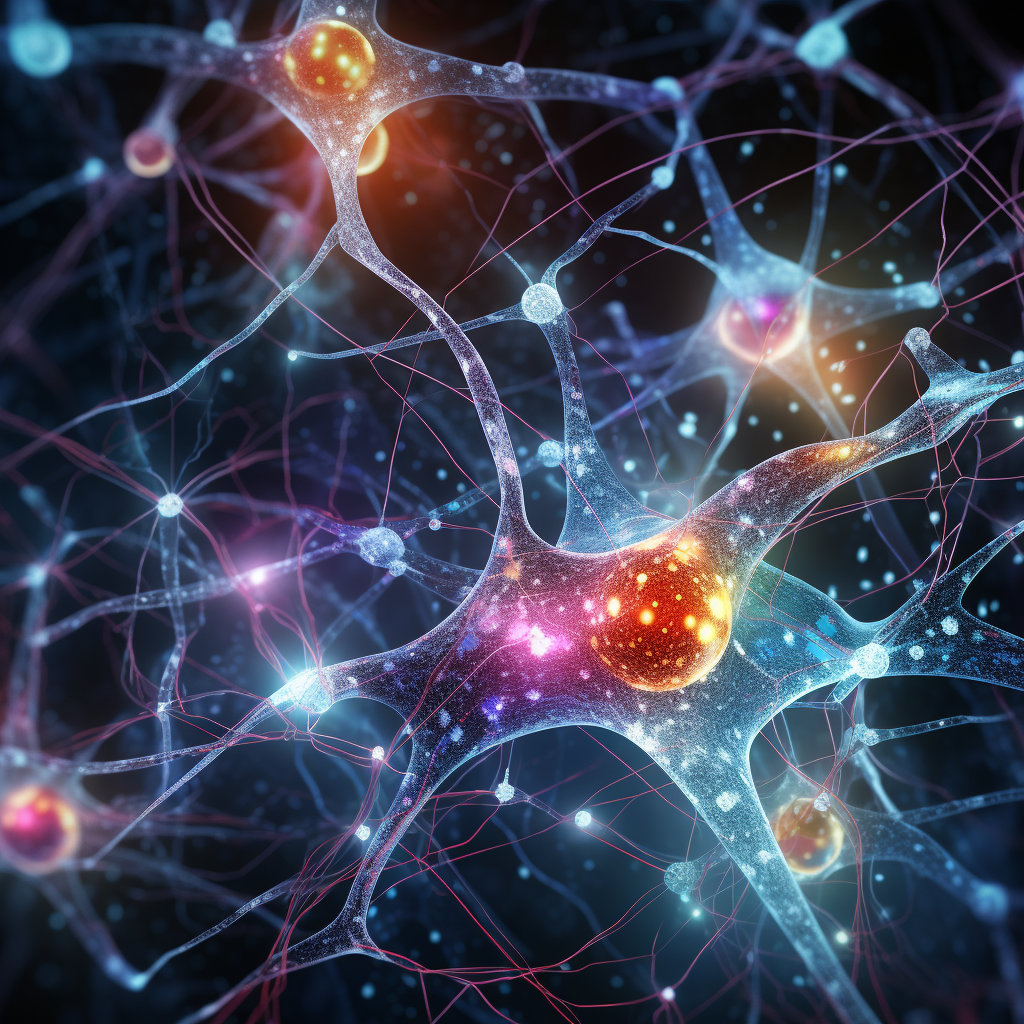
Dopamine is vital in brain functions that affect mood, sleep, memory, learning, concentration, and motor control.
A dopamine deficiency can be related to a number of medical conditions, including depression, schizophrenia, ADHD, and Parkinson’s disease.
There is no reliable way to directly measure levels of dopamine in a person’s brain but it can be observed in symptoms linked to low-motivation, boredom, chronic fatigue, lack of attention, hyperactivity, and mania.
Leisure activities that make a person feel happy and relaxed can increase dopamine levels.
Work activities that eliminate multitasking and distractions and follow a structured system of small wins and feedback loops for improvement can also increase dopamine levels.
While dopamine is usually associated with pleasure and rewards, it is released most strongly in anticipation of rewards, which is why setting clear goals and having an accountability system is one of the best ways to improve dopamine levels.
1. Optimal Nutrition
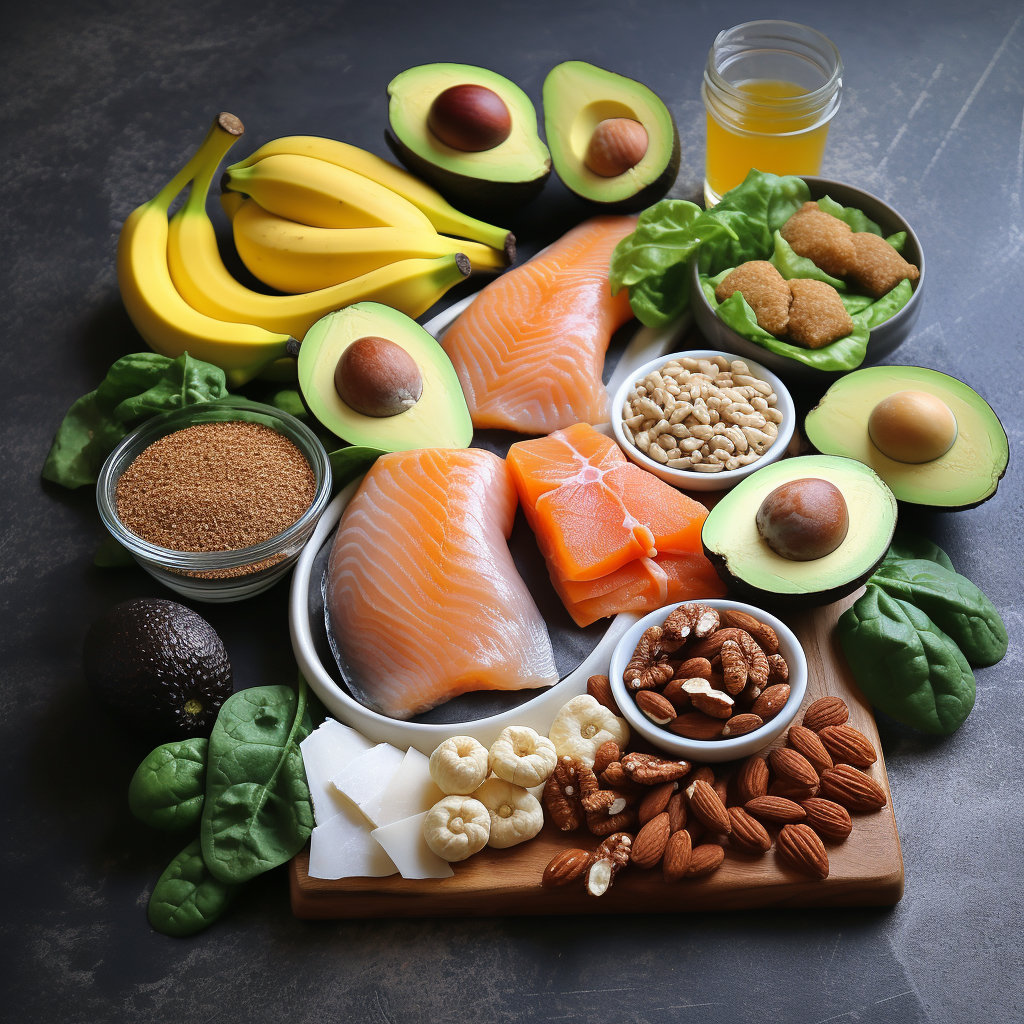
The first step is to eat more low-glycemic index foods and protein-rich foods high in amino acids tyrosine and phenylalanine.
Our bodies produce dopamine from the amino acid tyrosine. In turn, tyrosine can be produced from phenylalanine [1].
Both tyrosine and phenylalanine are commonly found in protein-rich foods such as [2]:
- Lean Protein: Eggs, Chicken and Turkey
- Fish: Mackerel, Sardines, Anchovys, Salmon, Trout, Herring, Tuna
- Nuts: Almonds, Pumpkin Seeds and Sesame Seeds
- Fruits: Avocados, Bananas, Apples, Oranges, Watermelon, Strawberries,
- Vegetables: Green Leafy Vegetables, Beets, Tomatoes
- Dairy: Milk, Cheese, Yogurt, Cottage Cheese
- Legumes: Soy, Lima Beans, Velvet Beans, Peas, Peanuts
ADHD is made significantly worse by inflammatory foods that throw your nervous system out of balance.
I recommend returning to a caveman or hunter (anti-inflammatory) diet with: nuts, berries, fruits, vegetables, seeds and lean sources of protein.
The fish should be wild-caught and the animal protein should come from grass-fed, free-ranging animals if possible. The chickens ideally should eat an organic diet and be pasture raised.
Lean meats are better because pesticides accumulate even in organic animals, given their presence in the air we breathe.
Significantly reduce sugar, artificial sweeteners, artificial colouring and saturated fats.
Diets high in sugar, artificial sweeteners, artificial food coloring and saturated fats (i.e. the SAD Diet) can suppress dopamine production.
It can very helpful to do an Elimination Diet where you identify and remove inflammatory foods from your diet. Start with gluten/dairy/soy/sugar.
Generally, whole foods with a low high glycemic index that don’t raise blood sugar quickly are better for consistent focus, mood and energy.
Green vegetables, most fruits, raw carrots, kidney beans, chickpeas and lentils are excellent. Look for minimally processed grains (whole grain, multigrain, rye, sourdough bread), low-fat dairy foods, and nuts to improve your ADHD symptoms.
2. Key Vitamins And Fats
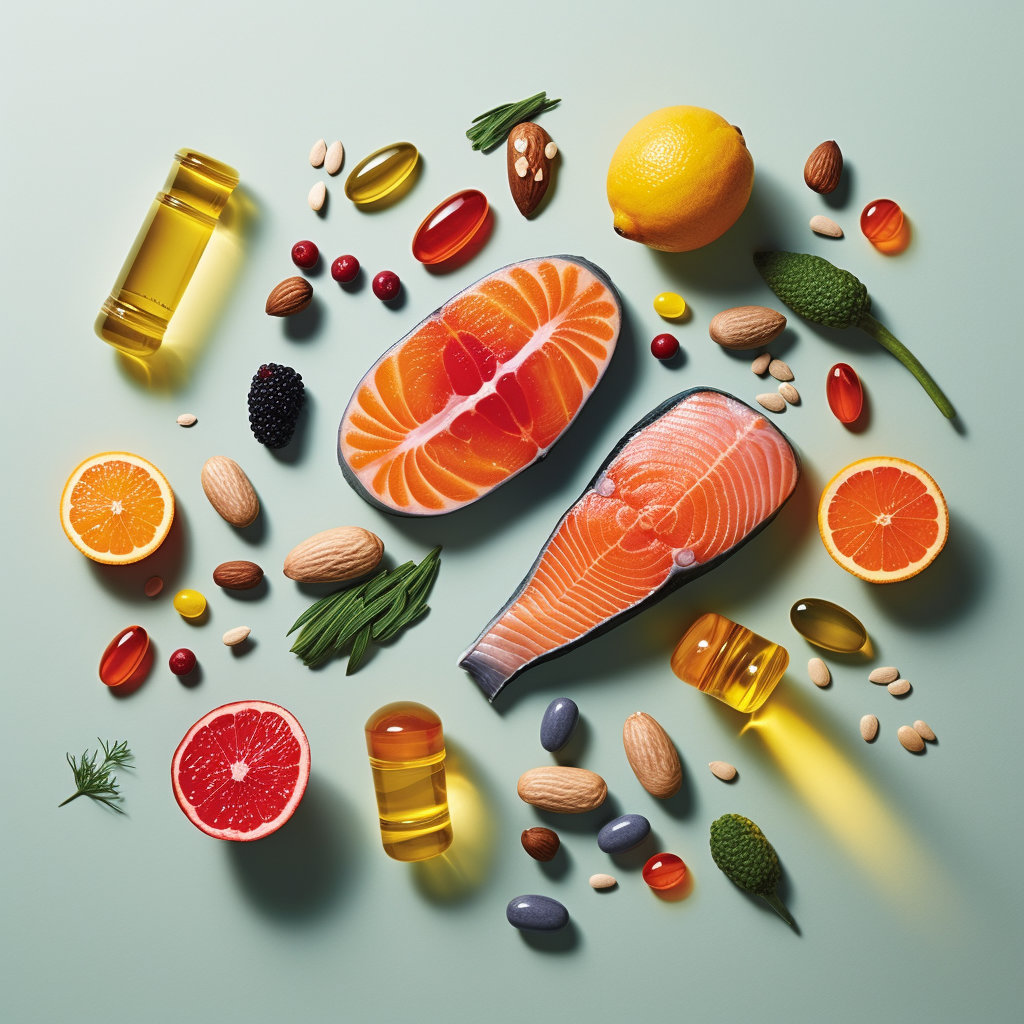
The foundational vitamin/fats stack I recommend for treating ADHD without meds is Omega 3 Oil (EPA/DHA), Vitamin D, B Vitamins and Magnesium.
Here’s why each of these vitamin and fats are so important to the ADHD brain:
- Magnesium:
Effective for sleep/stress and has also been proven to be effective in aiding ADHD symptoms. Magnesium glycinate is well liked and tolerated by vast majority of people. A small 2016 study found that 72% of the children diagnosed with ADHD had magnesium deficiencies. They showed significant improvements in cognitive function when supplementing with magnesium for eight weeks. - Omega 3s:
Omega 3s provide foundational support for healthy brain functioning and they tend to be deficit in the SAD diet. A higher EPA to DHA ratio is preferred for treating ADHD symptoms. They tend to help more with mood and emotional regulation than focus. - Vitamin D:
A study compared vitamin D levels in children with and without ADHD. Those with ADHD had significantly lower levels of vitamin D in their blood and were also more likely to have a vitamin D deficiency. Another study showed significant improvements in attention, impulsivity, and hyperactivity by restoring Vitamin D levels. Take with Vitamin K2. - B Vitamins:
B Vitamins are critically for improving symptoms of ADHD as they are crucial for your brain to make serotonin, norepinephrine, dopamine and melatonin. Vitamin B3 (Niacinamide), Vitamin B6 (Pyridoxine), Vitamin B9 (Folate) and Vitamin B12 (Cobalamin) are the big four to have in your B Complex Supplement or Multi-Vitamin. - Zinc:
Zinc deficiency can also contribute to negative ADHD symptoms.
3. Healthy Gut Microbiome
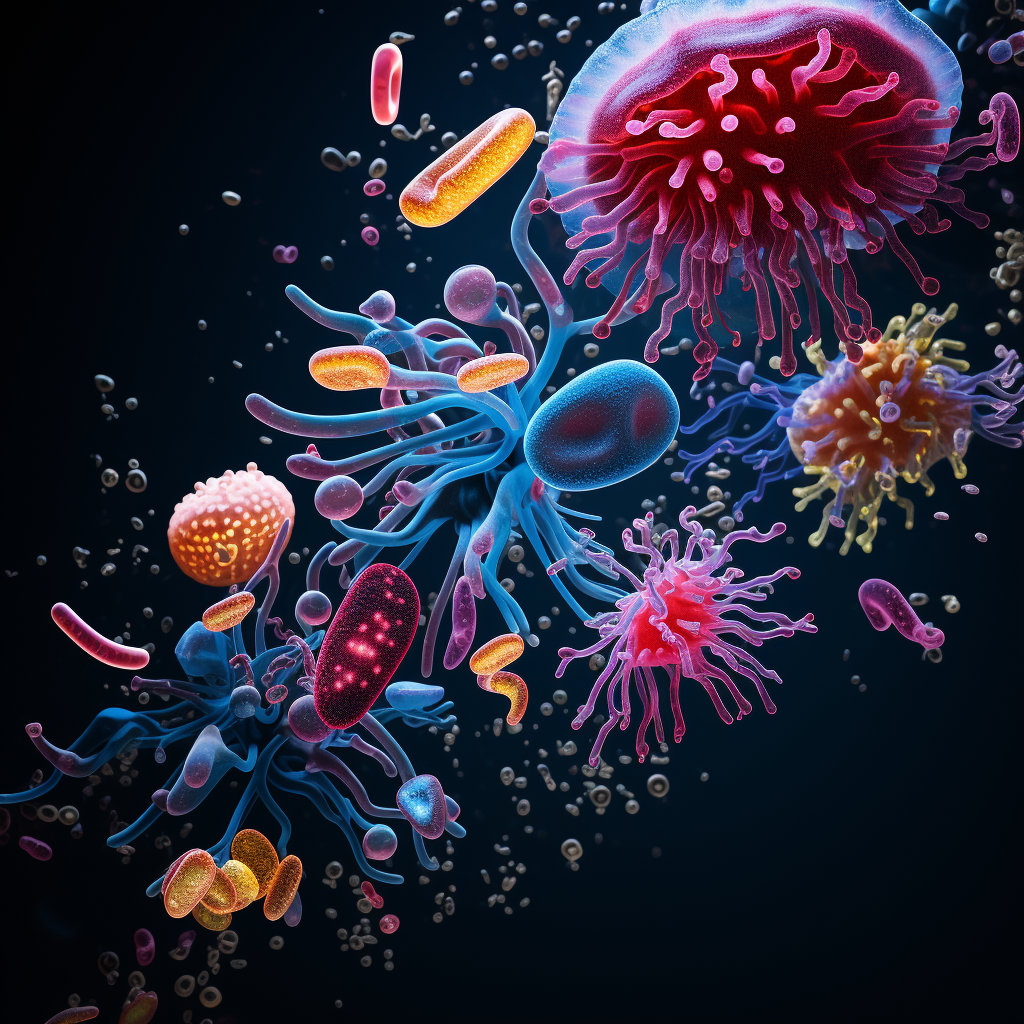
More than 50% of dopamine is synthesized in the gut so a healthy gut is key for having balanced dopamine levels.
The gut microbiome is connected to the vagus nerve, which connects to the brain.
1. Reduce stress: Stress and inflammation in the body lowers dopamine
2. Increase water intake: Stop dehydration with a water bottle at your desk
3. Eat foods high in probiotics: Yogurt, Kefir, Raw Sauerkraut
4. Gut bacteria supplements: Lactobacillus plantarum significantly increases dopamine and another study found that Lactobacillus rhamnosus increases dopamine in the frontal cortex.
5. Improve Digestion: Add HCL& Pancreatic Enzymes to support digestion and to help improve break down of macronutrients, fats and carbs to absorb the nutrients better.
4. Adaptogens
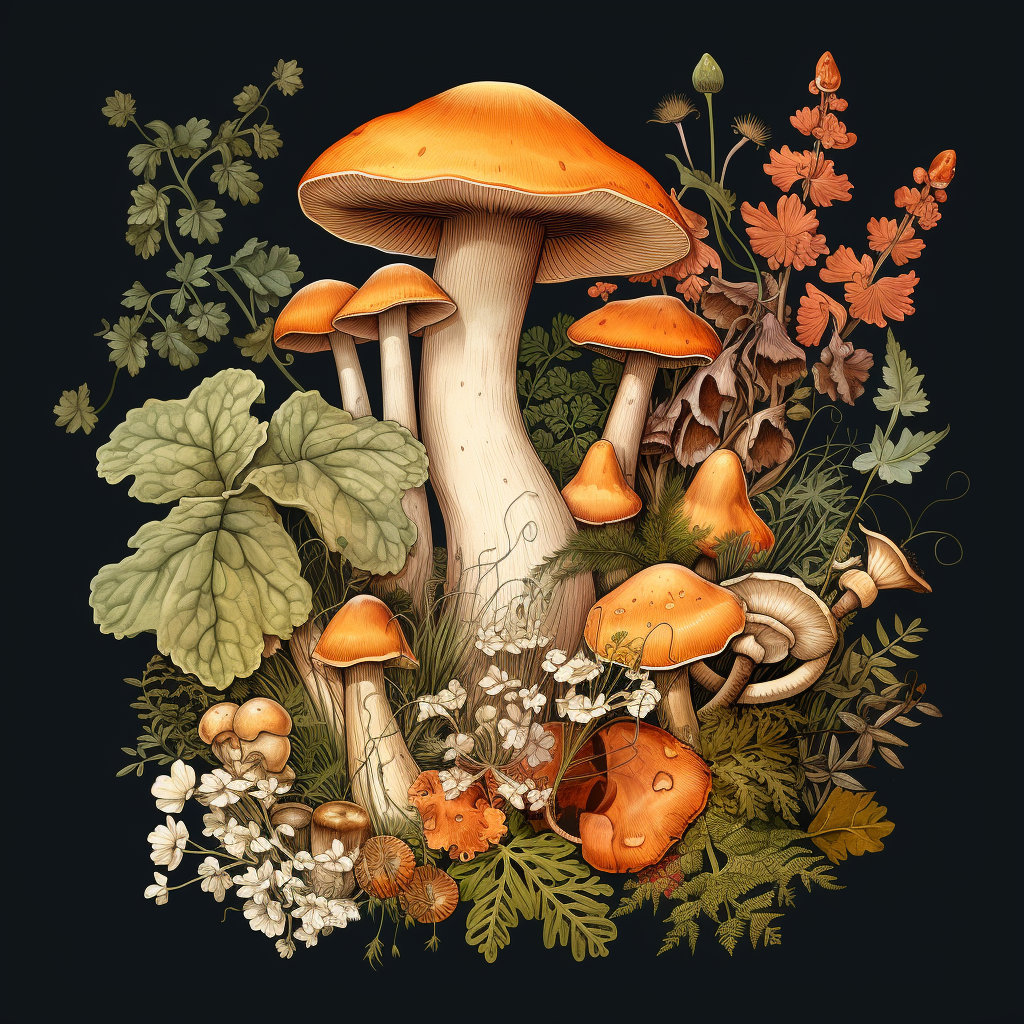
Adaptogens are derived from plants and mushrooms that help our bodies manage stress and maintain a balanced equilibrium.
I generally recommend taking plant adaptogens in the warmer months and mushroom adaptogens in the colder months.
I have covered these Adaptogens for ADHD in more depth in another post but here are the most powerful adaptogens.
🌿 The most powerful plant adaptogens:
- Rhodiola (Rhodiola rosea)
- Ashwagandha (Withania somnifera).
- Siberian Ginseng (Eleutherococcus senticosus)
- Schisandra (Schisandra chinensis)
- Horny Goat Weed (Epimedium grandiflorum)
- Holy Basil (Ocimum tenuiflorum)
🍄 The most powerful mushroom adaptogens:
- Reishi (Ganoderma lucidum)
- Lion’s Mane (Hericium erinaceus)
- Chaga (Nonotus obliquus)
- Cordyceps (Cordyceps sinensis)
- Shiitake (Lentinula edodes)
- Turkey Tail (Trametes versicolor)
- Oyster mushrooms (Pleurotus ostreatus)
5. Herbs

Many herbs have been shown to increase dopamine levels and improve focus, mood and energy.
Here are some of the herbs that have been studied in connection with ADHD:
1. L-Theanine: A non-dietary amino acid found in green tea that boosts the neurotransmitters serotonin, dopamine and GABA as well as increasing Brain-Derived Neurotrophic Factor (BDNF) and Nerve Growth Factor (NGF). It can also improve sleep quality.
2. L-Tyrosine: The precursor to the synthesis of dopamine in the brain. L-tyrosine enhances working memory, executive function, flow states, reduces stress, improves mood and is anti-anxiety. The suggested dosage of L-Tyrosine ADHD is 350- 500 mg twice per day.
3. Phenylalanine: Phenylalanine is an amino acid in plant and animal foods, such as meat, eggs, fish, and soy products. It has been found to have antidepressant, analgesic and appetite-suppressant properties.
4. Gotu Kola: One of the most important herbs in Ayurvedic medicine. It sharpens and energizes the mind and reduces mental fatigue. It also has an anxiolytic (anti-anxiety) effect.
5. Mucuna Pruriens: Works as an antioxidant and heavy metal chelator, improves memory & cognition, reduces depression and boosts libido. Tricky to get the dose right.
6. N-Acetyl L-Cysteine (NAC): NAC is an amino acid that regulates the amount of glutamate and dopamine in your brain. It helps relax the body and calm the mind.
7. Pine Bark Extract: Improves blood flow to the brain by increasing nitric oxide. Helps with oxidative stress and can increase levels of dopamine and norepinephrine.
8. Sabroxy: A dopamine reuptake inhibitor and a neuroplasticity enhancer that boosts focus, improves memory and supports brain health.
9. Ephedra: Also referred to as ephedrine, it is an herbal supplement that has been used for centuries in traditional Chinese medicine. A popular workout supplement as it feels a lot like amphetamines but it has been linked to serious health risks so should only be used at low doses. Banned in some countries as a result of heart risks.
10. Kava Kava: A relaxing herb from Polynesia that is called the herb of peace. A muscle relaxant, decreases inhibitions and can improve sleep quality. I used it to study in University and it is an excellent alternative to alcohol for relaxation and socializing.
11. Kratom: Derived from the leaf of a tree in the coffee family native to Southeast Asia. Boosts serotonin and norepinephrine to boost mood, combat fatigue and lower anxiety. Used in natural medicine as an opioid alternative. Can be addictive at higher doses.
12. Saffron: Acts as a dopamine and norepinephrine reuptake inhibitor, which is similar to how Ritalin works. Saffron shows a lot of promise as a way to manage ADHD with medication.
13. Citicoline: Known for its brain-energizing properties, it boosts norepinephrine and dopamine.
14. SAMe: A naturally occurring molecule i the body involved in the process of cell division, repair and the generation of neurotransmitters dopamine, serotonin, norepinephrine and melatonin. It is used to boost mood, relieve depression and improve energy levels.
15. Bacopa: A study of children with ADHD found bacopa reduced symptoms in 85% of participants. It improved scores for learning problems, impulsivity and restlessness (PubMed).
Here are some other herbs and supplements that also can boost dopamine: Yerba Mate, Gingko Biloba, Curcumin, Creatine, Tongkat Ali, Rosemary, Passionflower
6. Nootropics

Nooptropics can offer an alternative to ADHD stimulants like Ritalin, Dexedrine and Adderall.
Generally, what works best with Nootropics is to cycle them, taking each one only 2-3 times a week to avoid building up tolerance.
Piracetam: This is the most researched nootropic compound for cognitive enhancement but there are many nootropics in the category called Racetams that are derived from Piracetam.
Racetams have been safely used for decades as cognitive enhancer for improving mood, memory, concentration, creativity and reducing anxiety. Racetams work by increasing levels of acetylcholine, a neurotransmitter involved in learning and memory formation.
They must be taken with a quality choline supplement such as Alpha GPC or CDP-Cholinen to be fully effective at a 1:4 ratio (1 gram Alpha GPC : 4 grams Piracetam).
I’ve written in more details about Nootropics for ADHD that gets into the 7 well-known Racetams:
- Phenylpiracetam
- Aniracetam
- Noopept
- Pramiracetam
- Coluracetam
- Nefiracetam
- Oxiracetam
7. Nature Exposure

Bright, natural sunlight and fresh air can significantly improve your mood and sleep.
I have previously written about the enormous benefits I’ve found from Nature Therapy for ADHD and Attention Restoration Theory, which has found that people are naturally relaxed and recharged by green spaces and the self-similar branching fractal structure of the natural world.
In fact, my love of nature and how it calms my ADHD brain lead me to start my own ecotourism business in 2016 called Mindful Ecotourism.
If you want to learn about the science how nature and human rewilding can help ADHD, I recommend reading The Last Child In The Woods, which is an excellent book that looks at ADHD as largely a nature deficit disorder caused by far too much time inside, sedentary and in artificial environments with poor air quality and lack of natural light.
- Take a morning walk within 1 hour of waking up, ideally in the golden hour after sunrise.
- Take an evening walk as the sun is going down, ideally in the golden hour before sunset.
- In the winter, sit by a high spectrum light in the morning and reduce blue light at night.
- Spend at least 2-3 hours fully unplugged in a nature place like a park, forest or mountains to recharge your attention.
From my experience, a nature-connected lifestyle and daily exercise are crucial for managing ADHD with meditation.
8. Exercise

Numerous studies have shown that regular cardiovascular exercise where you get your heart rate in your target zone is more effective for ADHD and depression than medication.
Living a sedentary life, being a highly domesticated human and not going outside and exercising is particularly toxic to the ADHD nervous system.
- Cardiovascular exercise such as walking, jogging and bicycling has been shown to be one of the best ways of boosting dopamine.
- Weight training can also significantly boost dopamine.
- Thrill-seeking, adventure and action sports are great for boosting dopamine.
- Interestingly, living at higher elevations boosts dopamine (and reduces serotonin). Mountain towns tend to be magnets for adrenalin junkies with ADHD.
- Micro-movements that incorproate 30-60 seconds bursts of movement into your day or 7-minute workouts can be great for ADHD people to take a break and recharge off screens.
- Try a deep embodiment practice like Yoga, Qi Gong or Tai Chi to sync your mind and body.
9. Clear Goals And Accountability

Supplements are good for increasing focus, energy and mood but generally don’t have a big effect on the executive dysfunction that comes with ADHD.
People with ADHD need a weekly plan for how they will spend their peak performance window (the 2-3 hours where they can more easily get in the zone). This time of day usually depends on your chronotype.
Many people with ADHD may only have 2-4 hours a day of deep focused work in them but if that time is used effectively, they can be very effective.
Here’s how to use clear goals to create a structure for peak performance:
- Plan out your long-term goals so you can align your monthly, weekly and daily goals with them.
- Based on your long-term goals and vision, spend 20 minutes planning out your week so you can do your most important work in your peak performance window with high energy.
- Create structure and accountability for achieving small wins throughout out your day and achieving one big goal per day.
- Gamify your habits and long-term goals with little rewards along the way so your ADHD brain can expect regular rewards, score points, and visualize your progress.
- Get a timer and use it for difficult or boring tasks to make it into a challenge. Trouble focusing at work? Use a digital Pomodoro timer or body doubling that you can customize to your needs.
- Take lots of breaks to replenish your executive functioning. Watch this video for a lot of excellent tips for ADHD.
For ADHD without clear goals and tight feedback loops to keep them accountable, they often only achieve a fraction of their capability.
Here’s how to upgrade your accountability so you consistently uplevel and achieve your goals:
- Get an accountability partner, coach or mentor that pushes you to achieve your goals and holds you accountable when you miss them.
- Join a mastermind group of other ADHDers or people in your similar industry to get emotional support and advice from people that understand your brain.
- Create commitment contracts, use a habit tracker and create high consequences and deadlines that make you stick to your goals.
- I strongly suggest building your life around ADHD. We can’t follow the normal rules of society, because society is built for neurotypicals. You can’t match neurotypical in neurotypical jobs often, find something more creative and purposeful and find other ADHDers to support you.
10. Music
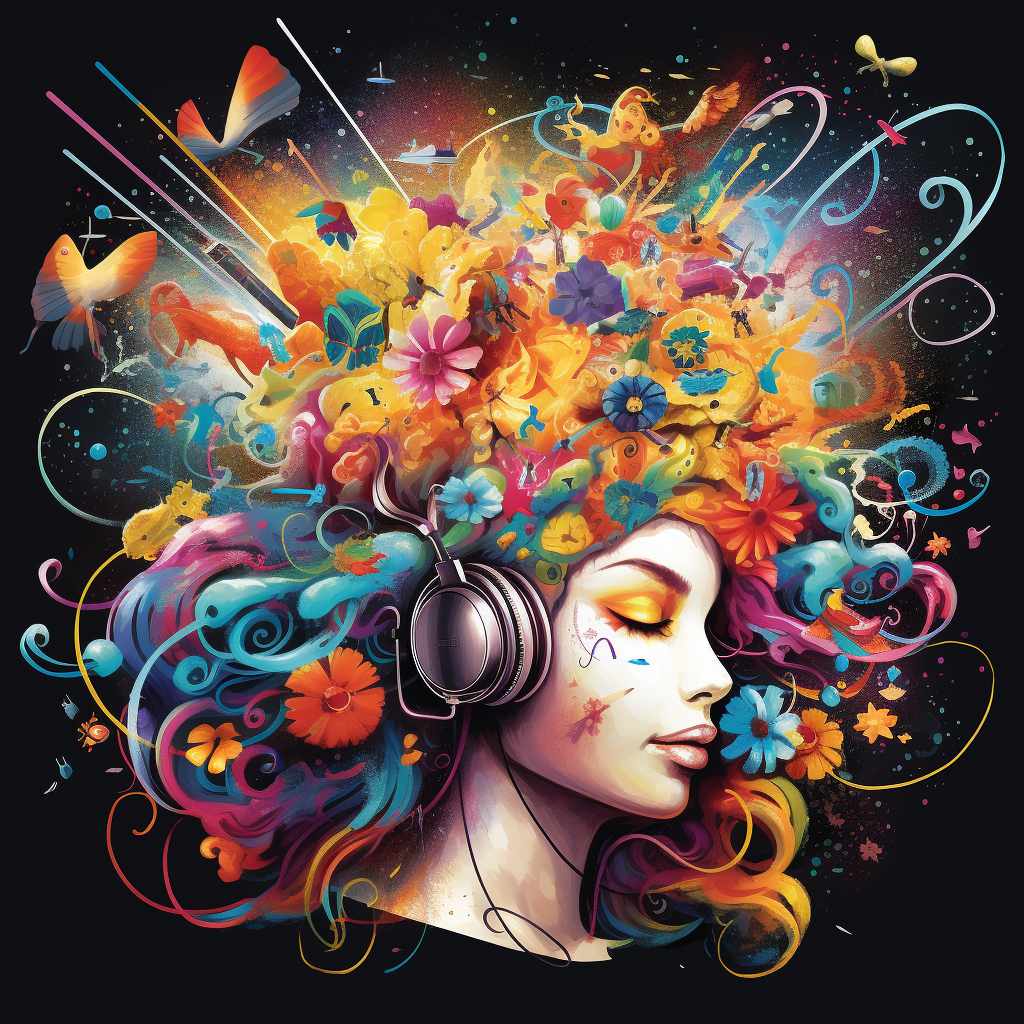
Music lights up the brain and can increase dopamine levels making it easier to focus. One of the ways I manage my ADHD with meds is by using music to get into flow states.
Here are some of the benefits of music for focus and productivity.
- Several major parts of the brain involved in mood, motivation, and reward — such as the striatum and nucleus accumbens — have been reported to release dopamine when people listen to pleasurable music.
- Additionally, not just listening to music — but also creating and / or performing it — has also been linked to increased levels and activity of dopamine in the brain.
- Brainwave entrainment music in 40 Hz gamma frequency was found to increase striatal dopamine release, which is closely related to motivation and focus.
- Binaural Beats has been shown to increase dopamine in low dopamine individuals. Electrical stimulation using the frequencies of 20 Hz and 60 Hz have been shown to increase dopamine in rats. It is possible to enter brainwave states that support dopamine production using sound technology.
I have previously covered using binaural beats for ADHD and the science of music for ADHD.
11. Meditation

The Kennedy Institute found that those who regularly meditated had a 65 percent increase in their dopamine levels after meditating.
Mindfulness practice is one of the most overlooked treatments for ADHD.
If you work on developing the ability to be more present, you’ll start to perceive everything around you as novel, which is huge because novelty is crucial to ADHD motivation.
- Meditation has been associated with increased release of dopamine (and serotonin) in the brain, thus increasing the feelings of pleasure and well-being.
- However, the effects seem to be only temporary unless meditation is practiced regularly and consistently.
- 3 months of practicing yoga was reported to increase the circulating blood levels of dopamine in men.
- Wim Hof Method, nose/mouth breathing, diagrammatic breathing, Qigong.
12. Sleep

As you probably already know, a lack of sleep, insomnia or poor-quality sleep can significantly worsen ADHD symptoms. Alternatively, consistent high-quality sleep is going to significantly improve your ADHD.
- When dopamine is released in the brain, it creates feelings of alertness and wakefulness.
- Research indicates that dopamine is released in large amounts in the morning when it’s time to wake up and that levels naturally fall in the evening when it’s time to sleep.
- Getting regular, high quality sleep helps keep your dopamine levels balanced so you feel more alert and high functioning during the day.
- Sleep hygiene can be improved by sleeping and waking at the same time each day, reducing noise in your bedroom, avoiding caffeine in the evening, and using your bed only for sleeping
- Lack of sleep can reduce dopamine sensitivity in the brain, resulting in excessive feelings of sleepiness. Getting a good night’s rest may help regulate your body’s natural dopamine rhythms.
- Get tested for Sleep Apnea, many of the negative symptoms of ADHD are also caused by the lack of quality sleep and increased blood pressure caused by Sleep Apnea.
Sleep wearables are a good way to track the quality of your sleep and their AI-powered recommendations are consistently getting better.
13. Cold Plunges

Researchers have found that cold water immersion increases dopamine by 250%.
For cold plunges, I recommend learning the Wim Hof Method.
Start with a 10 second cold rinse at the end of your showers and work your way up gradually to 2 minutes.
Do the WHM breathing before doing your cold exposure and it will be a lot easier. While exposed to the cold, breath in and out at a rhythmic pace and allow your mind to rest on your breath.
14. Fasting

Fasting allows your digestive system to take a break and triggers the release of hormones and neurotransmitters, including dopamine.
I have found both water fasting and dry fasting to be extremely effective for improving my focus, energy and mood. However, I’d recommend starting with intermittent fasting before embarking on a longer fast.
High blood pressure, high blood sugar, high triglycerides and low HGL (as well as high insulin levels or insulin resistance) are all part of metabolic syndrome, which makes ADHD much worse. Fasting is the most effective way I’ve found to reverse metabolic syndrome, which is almost inevitable if you eat the Standard American Diet (SAD).
Researchers have found that intermittent fasting leads to higher levels of dopamine by increasing dopamine release and enhancing dopamine action as well as mitigate age-related loss of dopamine receptors.
I often eat all my food for the day within an 8-hour window, and then fast for the rest of the day.
The best way to start fasting is by eating dinner around 6, not eating anything after that before bed, and then eating a regular breakfast the next day. That should give you about 12-14 hours of fasting time.
If you struggle from something like high blood pressure doing a longer 3-5 day water fast can help hit the reset button on your nervous system. I recommend seeking out a naturopath or health coach to do this properly as there are risks and talking to your doctor if you’re taking any medications.
Get the app Zero to track your feasting and fasting windows.
If you struggle with low energy and blood sugar while fasting, I recommend using Dave Asprey’s Bulletproof Coffee protocol for fasting:
- Coffee: Drink your regular morning coffee with no addictives except MCT Coconut Oil and Grass-Fed Butter first thing in the morning to maintain your fasting window until lunch.
- MCT Coconut Oil: Virgin or unrefined coconut oil is a potent antioxidant, anti-tumor, anti-bacterial, anti-viral, and anti-fungal. Gives your brain fuel for performance.
- Grass-Fed Butter: Combine with grass-fed butter or ghee (will be 2x regular grain-fed better) but it is essential for keeping your body in fasting mode.
15. Wearable Tech
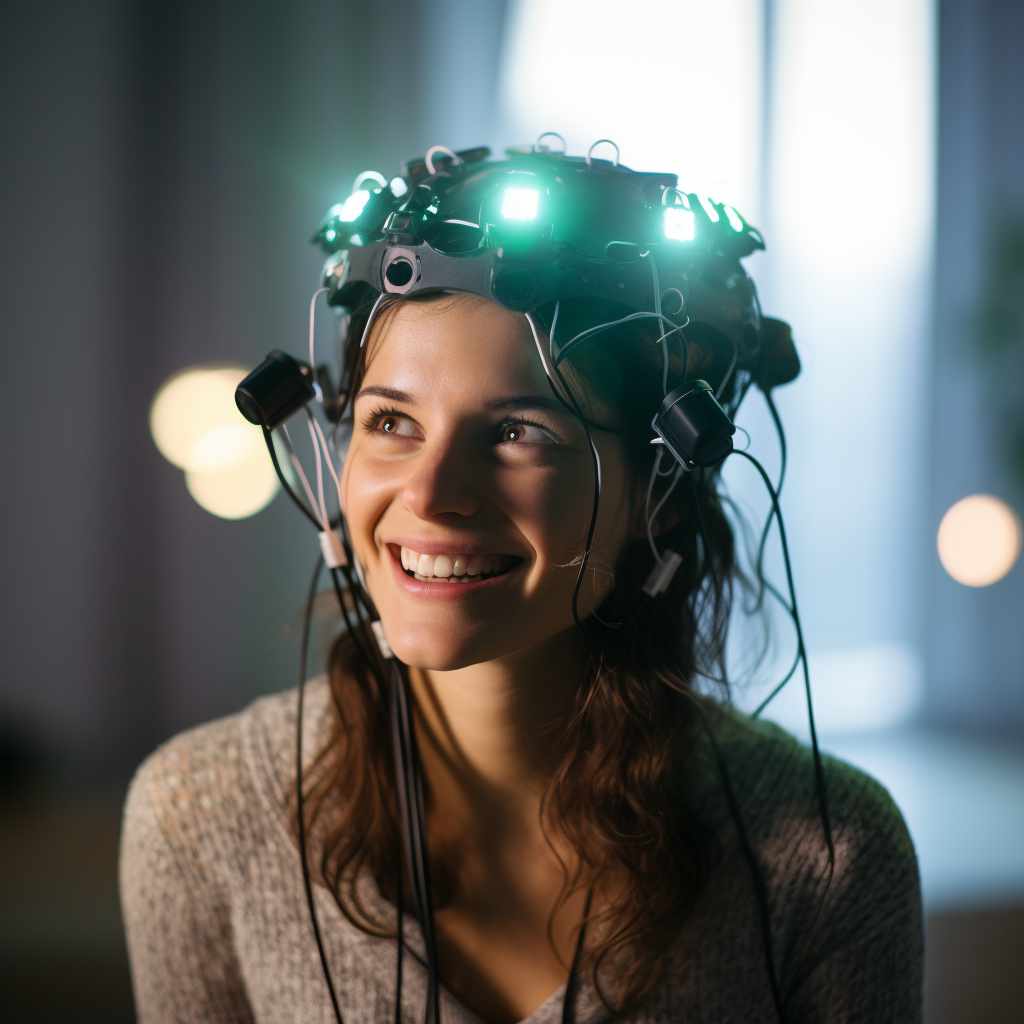
Wearable devices that can help the most with ADHD are fitness trackers, neurofeedback wearables and biofeedback wearables.
Fitness trackers can help track your daily, weekly and monthly activity levels. They also include activities and insights to help you boost your fitness.
Neurofeedback wearables can enable you to do brain training at home to improve your focus, self-regulation and mood.
Biofeedback wearables that can track HRV (heart rate variability) can make meditation easier and help you track homeostasis and how balanced your nervous system is over time.
There’s also a new crop of focus-enhancing headphones that help you be more productive at work that are promising for improving ADHD productivity.
If you’re struggling with high stress and anxiety, vagus nerve stimulation wearables are showing a lot promise for improving nervous system regulation with ADHD.
- 10 Tips, Tricks And Tools To Overcome ADHD Paralysis - March 19, 2025
- 10 Interesting Facts About Adult ADHD And Mental Health - March 18, 2025
- 15 Ways To Manage ADHD Without Meds By Biohacking Dopamine - February 14, 2025




